How to create a categorical bubble plot, using GNU R, similar to that used in systematic mapping studies (see below)?

EDIT: ok, here's what I've tried so far. First, my dataset (Var1 goes to the x-axis, Var2 goes to the y-axis):
> grid
Var1 Var2 count
1 Does.Not.apply Does.Not.apply 53
2 Not.specified Does.Not.apply 15
3 Active.Learning..general. Does.Not.apply 1
4 Problem.based.Learning Does.Not.apply 2
5 Project.Method Does.Not.apply 4
6 Case.based.Learning Does.Not.apply 22
7 Peer.Learning Does.Not.apply 6
10 Other Does.Not.apply 1
11 Does.Not.apply Not.specified 15
12 Not.specified Not.specified 15
21 Does.Not.apply Active.Learning..general. 1
23 Active.Learning..general. Active.Learning..general. 1
31 Does.Not.apply Problem.based.Learning 2
34 Problem.based.Learning Problem.based.Learning 2
41 Does.Not.apply Project.Method 4
45 Project.Method Project.Method 4
51 Does.Not.apply Case.based.Learning 22
56 Case.based.Learning Case.based.Learning 22
61 Does.Not.apply Peer.Learning 6
67 Peer.Learning Peer.Learning 6
91 Does.Not.apply Other 1
100 Other Other 1
Then, trying to plot the data:
# Based on http://flowingdata.com/2010/11/23/how-to-make-bubble-charts/
grid <- subset(grid, count > 0)
radius <- sqrt( grid$count / pi )
symbols(grid$Var1, grid$Var2, radius, inches=0.30, xlab="Research type", ylab="Research area")
text(grid$Var1, grid$Var2, grid$count, cex=0.5)
Here's the result: 
Problems: axis labels are wrong, the dashed grid lines are missing.

